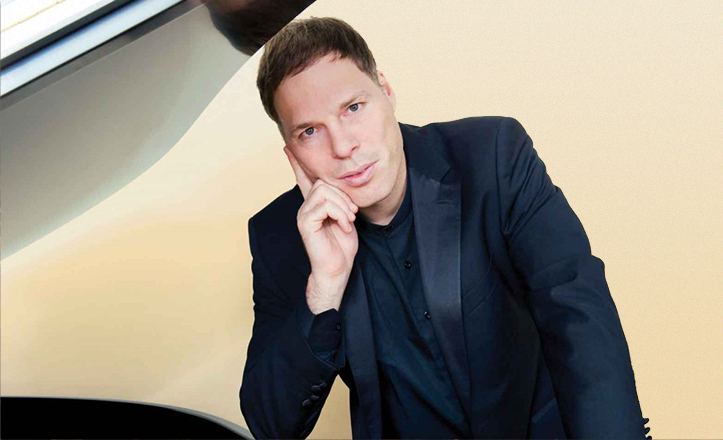by David Kulma

After sharing how Domenico Scarlatti wrote his 500-plus single-movement sonatas as “exercises” in the possibilities of the keyboard, Goldstein sat down and delivered four varied examples. The opening c-minor sonata, K. 11, featured pliant hushed tones and calm forthright statements, while the following C-major sonata, K. 159, showed off his ability with hopscotch arpeggios and peppy “horn” fifths. The G-major sonata, K. 324, gave the pianist the opportunity to display smooth lines, while the final d-minor sonata, K. 120, sparkled with Herculean cross-hand jumps in a highly caffeinated musical landscape. He played the whole set with great care (and perfect trills).
Goldstein unfurled a stunning rendition of Beethoven’s “Moonlight” Sonata. This three-movement “sonata quasi una fantasia” is one of the composer’s most famous, and the pianist avoided cliché by maintaining a continuous, consistent rhythm and giving a clean, calm reading that enunciated its spooky ethos without histrionics. He maintained a beautiful tone with smooth phrasing, choosing not to dive into Beethoven’s violent tendencies. Goldstein’s unusually restrained, focused playing gave this music a surprisingly effective, clear hue.
Goldstein’s self-crafted Debussy triptych that came next was a revelation. He spoke about how the composer planned a “second Suite Bergamasque” to include Masques and L’Isle joyeuse. Goldstein stapled them together with another work from that time serving as the center: D’un cahier d’esquisses (“from a sketchbook”). The set showed Goldstein to be a master Debussy interpreter. His understated precision and wonderful handle on color brought a shining power to this beautiful music. He vigorously attacked the guitar-like gestures that appear in both the outer works and brought out the intoxicating chords and fragrant sea foam, while still keeping the music in check.
After intermission, Goldstein played a solo piano version of “The Masque” from Leonard Bernstein’s Symphony No. 2, “The Age of Anxiety.” This jazzy presto brought to mind the composer’s catchy, boisterous music for On the Town. Its almost boogie-woogie feeling mixed with Gershwin was six minutes of captivating piano music.
The final work was Schubert’s “Wanderer” Fantasy, written as a virtuosic showpiece. The composer built each of its four interlocking movements from the melody of his own song Der Wanderer. Goldstein played it with great skill and power, although it’s hard to be thrilled by repetitive music of such unheavenly length.
Goldstein ended the afternoon with a delightfully quixotic encore: “Danza de la moza donosa,” the second of Alberto Ginastera’s Danzas Argentinas. The final piquant chord of this beautifully strange dance ended an enjoyable recital on just the right note.
Published on ClevelandClassical.com November 26, 2018.
Click here for a printable copy of this article



